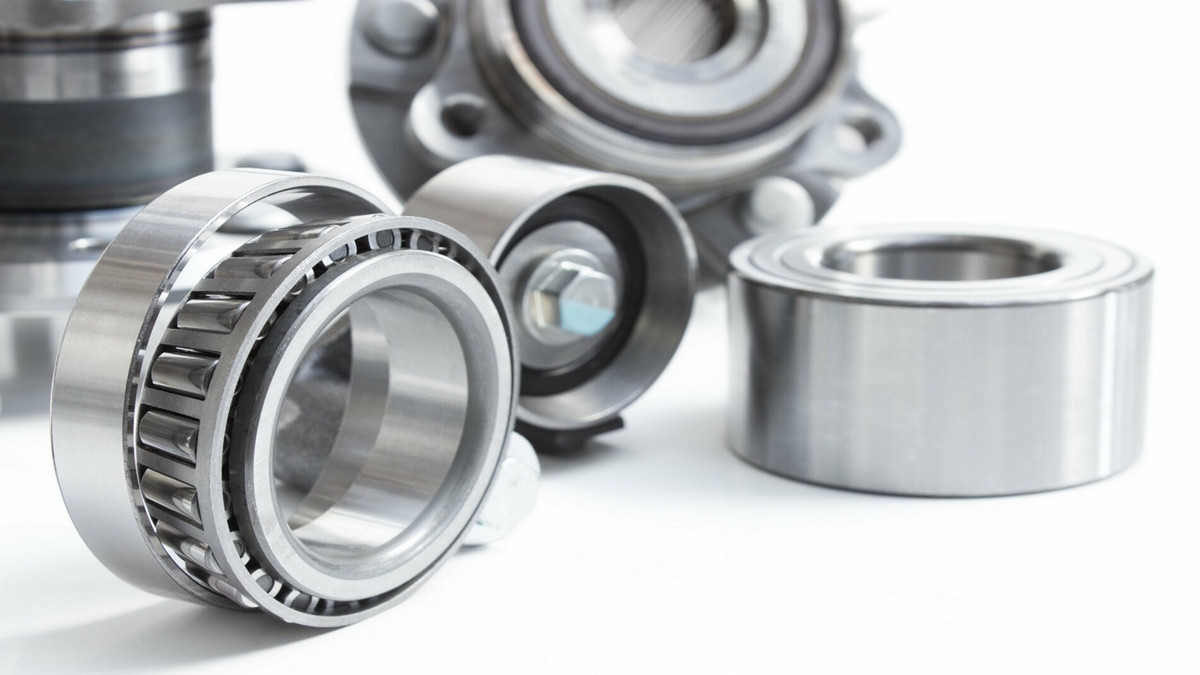Bearings are components that fix and reduce the friction coefficient of loads during mechanical transmission. It plays a pivotal role in contemporary mechanical equipment. Its main function is to support the mechanical rotating body to reduce the friction coefficient of the mechanical load during the transmission process of the equipment. It plays a pivotal role in contemporary mechanical equipment. Its main function is to support the mechanical rotating body to reduce the friction coefficient of the mechanical load during the transmission process of the equipment. Following “What are the Types and Uses of Common Bearings? (Part I)”, the article continues to share the characteristics, differences and corresponding uses of several common bearings.
Thrust Roller Bearings
Thrust roller bearings are used to bear axial load-based shafts, combined warp load, but the warp load must not exceed 55% of the axial load. Compared with other thrust roller bearings, this kind of bearing has lower friction coefficient, higher speed and self-aligning ability. The rollers of the 29000 type bearings are asymmetrical spherical rollers, which can reduce the relative sliding between the stick and the raceway during work, and the rollers are long, large in diameter, and the number of rollers is large. The load capacity is large, and oil lubrication is usually used. Grease lubrication is available at low speeds.
Main application: hydroelectric generator, crane hook.
Cylindrical Roller Bearings
Cylindrical roller bearings are usually guided by two ribs of a bearing ring, and the cage roller and guide ring form an assembly that can be separated from the other bearing ring, which is a separable bearing.
This kind of bearing is easy to install and disassemble, especially when the inner and outer rings and the shaft and housing are required to have an interference fit. Such bearings are generally only used to bear radial loads, and only single-row bearings with ribs on both inner and outer rings can bear small steady axial loads or large intermittent axial loads.
Main applications: large motors, tool machine spindles, axle boxes, diesel engine crankshafts, automobiles, gearboxes, etc.
Four-Point Contact Ball Bearings
It can bear radial load and bi-directional axial load. A single bearing can replace the angular contact ball bearings combined in front or back. It is suitable for bearing pure axial load or synthetic load with a large axial load component. This type of bearing can withstand any direction One of the contact angles can be formed when the axial load is applied, so the ring and the ball are always in contact with two sides and three points on any contact line.
Main applications: aircraft jet engines, gas turbines.
Thrust Cylindrical Roller Bearings
It consists of washer-shaped raceway rings (shaft rings, seat rings) with cylindrical rollers and cage assemblies. Cylindrical rollers are processed with convex surfaces, so the pressure distribution between the rollers and the raceway surface is uniform, and can bear unidirectional axial loads. The axial load capacity is large and the axial rigidity is also strong.
Main applications: oil drilling rigs, iron and steel machinery.
Thrust Needle Roller Bearings
Separable bearings are composed of raceway rings, needle rollers and cage assemblies, which can be combined with thin raceway rings processed by stamping or thick raceway rings processed by cutting. Non-separable bearings are integrated bearings composed of precision stamped raceway rings, needle rollers and cage assemblies, which can withstand unidirectional axial loads. This type of bearing occupies a small space and is conducive to the compact design of machinery. Only the needle roller and cage assembly are used, and the mounting surface of the shaft and the housing is used as the raceway surface.
Main application: Transmission devices for automobiles, cultivators, machine tools, etc.
Thrust Tapered Roller Bearings
This type of bearing is equipped with truncated cylindrical rollers (the big end is a spherical surface), and the rollers are accurately guided by the ribs of the raceway ring (shaft ring, seat ring). The vertices of each conical surface intersect at a point on the center line of the bearing. One-way bearings can bear one-way axial loads, and two-way bearings can bear two-way axial loads.
Main application: one-way: crane hook, oil drilling rig swivel. Bidirectional: rolling mill roll neck.
Outer Spherical Ball Bearing with Seat
The outer spherical ball bearing with seat is composed of an outer spherical ball bearing with seals on both sides and a cast (or stamped steel) bearing seat. The internal structure of the outer spherical ball bearing is the same as that of the deep groove ball bearing, but the inner ring of this kind of bearing is wider than the outer ring, and the outer ring has a truncated spherical outer surface, which can be automatically aligned when matched with the concave spherical surface of the bearing seat.






.png)







